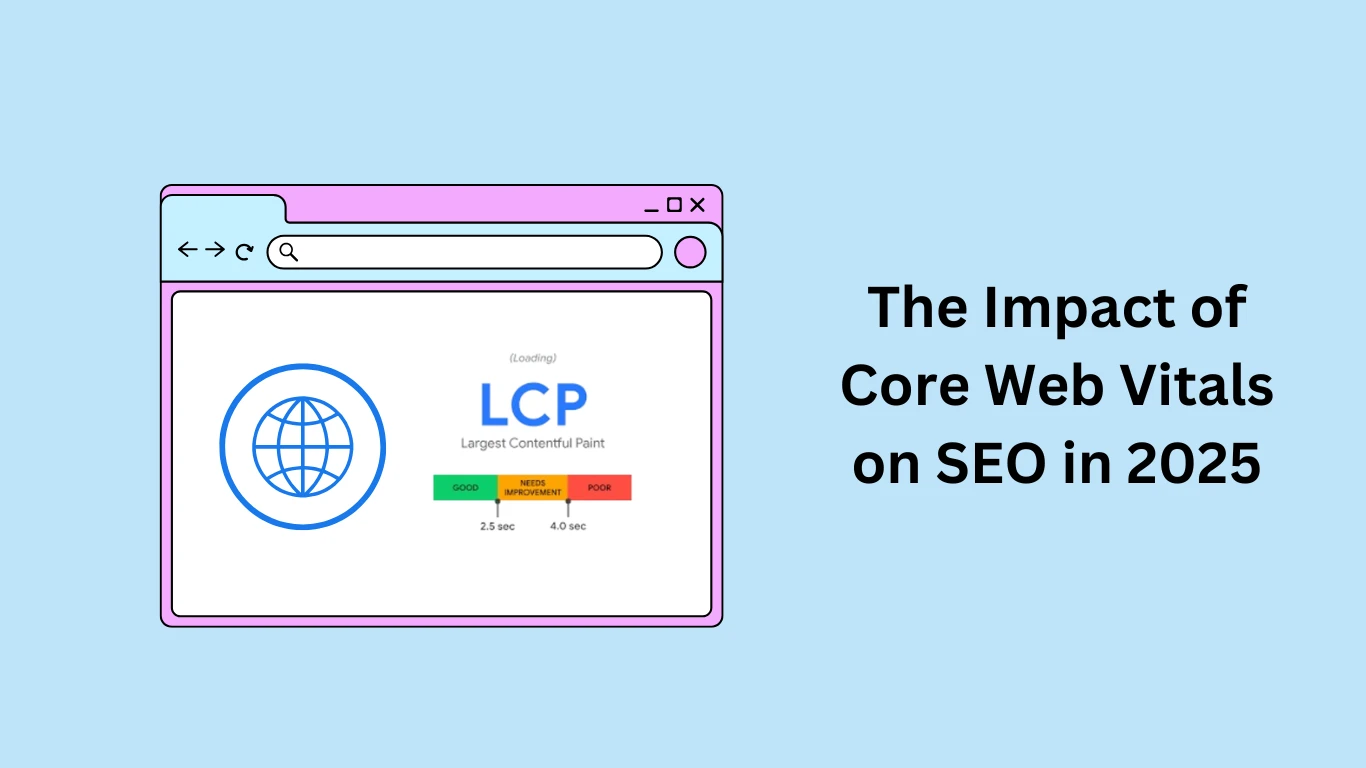The Impact of Core Web Vitals on SEO in 2025

In today's digital era, every website aims to come on top in search engine results (SERPs). But do you know that Google is no longer just based on keywords or backlinks, but also the content of your website? User Experience Are you even paying attention? and why is that Core Web Vitals The importance of is increasing day by day.
in 2025 Core Web Vitals Has become an important factor that can make or break your website's ranking. Let us know, what are Core Web Vitals, what is their impact on SEO, and how to optimize them.
Core Web Vitals: These are the new tests for your website
Core Web Vitals Google has a set of metrics that measure three main aspects of your website:
- Largest Contentful Paint (LCP):
It measures the speed at which your website's main content loads. The ideal time should be 2.5 seconds or less. - First Input Delay (FID):
It measures how quickly your website responds when a user interacts with your site. FID time should be less than 100ms. - Cumulative Layout Shift (CLS):
When a page shifts suddenly, the user faces problems. CLS score must be 0.1 or less.
Why are Core Web Vitals important for SEO?
Google in 2025 Page Experience Update Core Web Vitals has become an important ranking factor. This means that not only good content will make your website rank on top, but your page loading speed and user experience will also matter.
Some special benefits:
- Better Ranking: If your website passes the Core Web Vitals test, Google will give it a top ranking.
- User Retention: Better page speed and interactivity will keep users on your website for a longer period of time.
- Improvement in conversion rate: With a smooth and fast website, users buy products or avail services more easily.
How to Improve Core Web Vitals?
1. Pay attention to page speed
Page speed was already important in SEO, but now it has become even more important.
- Optimize Images: Compress your website images so they load faster.
- Use CDN: Content Delivery Network makes your website load faster.
- Use caching: Caching increases the speed of repeatedly loading content.
2. Adopt Modern Website Technology
- Lazy Loading: This technology loads images only when the user views them.
- Optimize JavaScript: Delete or minify heavy JavaScript files.
- Use HTTP/3: This latest protocol helps in increasing the speed of your website.
3. Focus on User Experience
- Create a mobile-friendly website: Google now gives more priority to the mobile experience.
- Reduce pop-ups: Too many pop-ups can irritate the user.
- Make navigation easier: Design the menus and links so users can navigate the page without hassle.
4. Do testing and monitoring
- Google PageSpeed Insights: This tool shows your website speed and Core Web Vitals score.
- Use Search Console: Here you can check the performance of your website according to Google.
- Web Vitals Chrome Extension: This browser extension shows the live performance of your website.
The world of SEO is changing in 2025
Google's Page Experience Update has made it clear that websites should not depend only on content and backlinks.
So what do you have to do?
- Prioritize Core Web Vitals.
- Make your website fast and user-friendly.
- Monitor website performance regularly.
What happens if core web vitals fail?
If your website does not pass the Core Web Vitals test, it will directly affect your ranking.
- Bounce rate may increase.
- Users will not come back.
- Competitors will overtake you.
Final Words: It Is Not Wise to Ignore Core Web Vitals
in 2025 Core Web Vitals are Not just a trend, but have become a necessity. If you want your website to rank top and your users to be happy, then do not ignore these aspects.
Then what are you waiting for? Take the Core Web Vitals test of your website today and take a step forward in the world of SEO.
 Some Question
Some Question